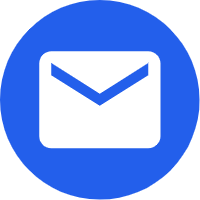 English
English-
 English
English -
 Español
Español -
 Português
Português -
 русский
русский -
 français
français -
 日本語
日本語 -
 Deutsch
Deutsch -
 Tiếng Việt
Tiếng Việt -
 Italiano
Italiano -
 Nederlands
Nederlands -
 ไทย
ไทย -
 Polski
Polski -
 한국어
한국어 -
 Svenska
Svenska -
 magyar
magyar -
 Malay
Malay -
 বাংলা
বাংলা -
 Dansk
Dansk -
 Suomi
Suomi -
 हिन्दी
हिन्दी -
 Pilipino
Pilipino -
 Türk
Türk -
 Gaeilge
Gaeilge -
 عربى
عربى -
 Indonesia
Indonesia -
 norsk
norsk -
 اردو
اردو -
 čeština
čeština -
 Ελληνικά
Ελληνικά -
 Українська
Українська -
 Javanese
Javanese -
 فارسی
فارسی -
 தமிழ்
தமிழ் -
 తెలుగు
తెలుగు -
 नेपाली
नेपाली -
 Burmese
Burmese -
 български
български -
 ລາວ
ລາວ -
 Қазақ
Қазақ -
 Euskal
Euskal -
 Azərbaycan
Azərbaycan -
 slovenský
slovenský -
 Македонски
Македонски -
 Lietuvos
Lietuvos -
 Eesti Keel
Eesti Keel -
 Română
Română -
 Slovenski
Slovenski -
 मराठी
मराठी -
 Српски
Српски
How are Thermo-Sensitive Cups with PP Material Produced?
2024-01-02
How are Thermo-Sensitive Cups with PP Material Produced?
Thermal-Sensitive Cups
It is said that this winter is particularly cold! As the weather gets colder, people are no longer drinking cold beverages. The popular cold-sensitive color-changing cups from this summer have been upgraded, and designers have developed heat-sensitive color-changing cups.
As the name suggests, heat-sensitive color-changing cups change color when they encounter hot drinks. There are four types of materials for heat-sensitive color-changing cups: heat-sensitive color-changing ceramic cups, glass cups, stainless steel cups, and plastic cups. Today, let's learn about the processing technology of heat-sensitive color-changing plastic cups from SUAN HOUSEWARE, a professional manufacturer of color changing cups, stadium cups.

Thermochromic Pigments
Thermochromic pigments are microencapsulated reversible thermosensitive substances that can change color with temperature variations. By injection molding thermochromic pigments together with plastic, thermochromic products can be produced. Heat-sensitive color-changing cups are also produced using this principle. Common plastic materials used for producing color-changing cups include Polypropylene (PP), Polyvinyl Chloride (PVC), Acrylonitrile Styrene (AS), Acrylonitrile Butadiene Styrene (ABS), and silicone, which are transparent or semi-transparent plastic materials. During injection molding, extrusion processing, casting, molding, or curing, thermochromic pigments are microencapsulated reversible thermosensitive substances that can change color with temperature variations. By injection molding thermochromic pigments together with plastic, thermochromic products can be produced. The dosage of thermochromic pigments is 0.4~3.0% of the plastic, typically 0.6~1.0%. Thermochromic pigments should be thoroughly mixed with plastic particles (a small amount of mineral oil can be used during mixing). If ordinary pigments are mixed with thermochromic pigments, the dosage of ordinary pigments (or dyes) is approximately 0.5-2.5% of the thermochromic pigments.
The entire operation process requires attention to the injection molding temperature. The processing temperature should be controlled below 200°C, and should not exceed 210°C. The heating time of the material should be minimized. (High temperatures and prolonged heating can damage the color-changing properties of the thermochromic pigments.)






